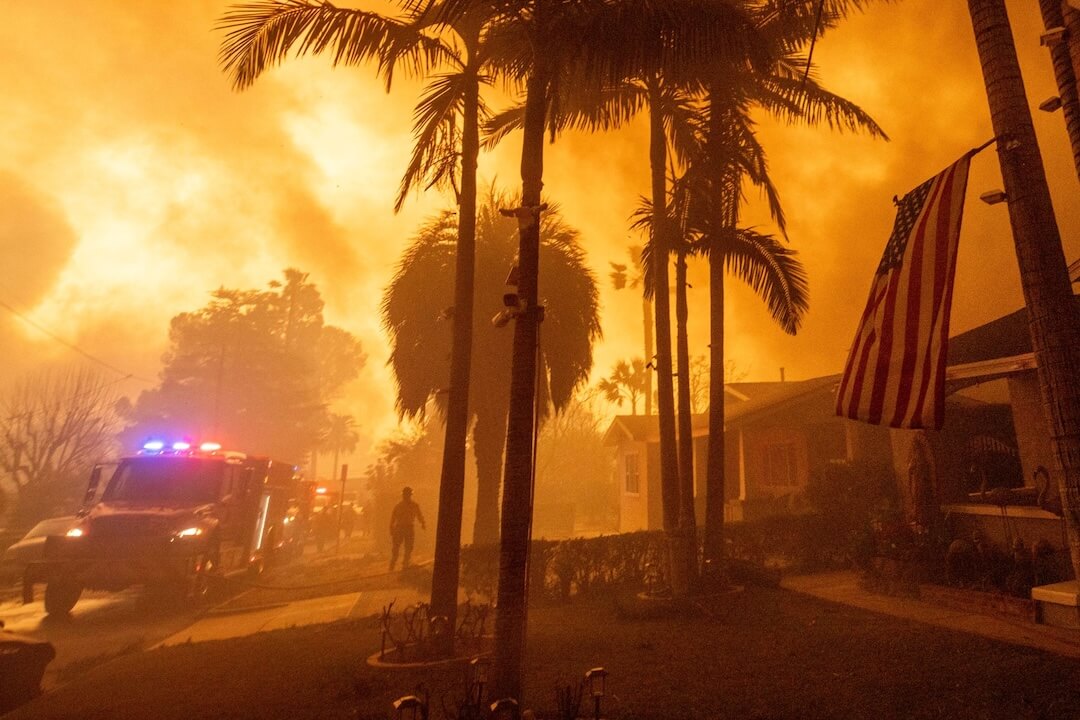 Covering COVID-19 is a daily Poynter briefing of story ideas about the coronavirus and other timely topics for journalists, written by senior faculty Al Tompkins. Sign up here to have it delivered to your inbox every weekday morning.
Covering COVID-19 is a daily Poynter briefing of story ideas about the coronavirus and other timely topics for journalists, written by senior faculty Al Tompkins. Sign up here to have it delivered to your inbox every weekday morning.
New York health care workers, doctors and nurses turned to the U.S. Supreme Court to block a vaccine mandate and Monday, the court turned them away.
The court has now allowed mandates to stand in three states — New York, Indiana and Maine — seemingly sending a message that states have the authority to set such policy.
Justice Neil Gorsuch wrote in a dissenting opinion that health care workers should be allowed to claim religious exemptions. New York does not allow religious exemptions from its mandate.
“Sometimes dissenting religious beliefs can seem strange and bewildering. In times of crisis, this puzzlement can evolve into fear and anger,” Gorsuch wrote.
He continued: “New York has presented nothing to suggest that accommodating the religious objectors before us would make a meaningful difference to the protection of public health. The State has not even tried.”
November 2021: COVID is still the third leading cause of death in the US
Who would have thought a year ago that the novel coronavirus would be the third leading cause of death in America? That number is holding steady.
The Kaiser Health System Tracker points out:
The number of daily deaths from COVID-19 had decreased remarkably from the once staggering 3,118 deaths per day in January 2021 but started increasing again, in August 2021, with the spread of the Delta variant. In November 2021, COVID-19 took the lives of 1,110 people per day on average. By comparison, heart disease, which is typically the number one cause of death in the U.S. each year, leads to the death of about 2,000 people per day, and cancer claims about 1,600 lives per day, on average.
The US will soon hit 800,000 COVID-19 deaths
As The New York Times points out, almost one out of 100 Americans aged 65 or older has died in this pandemic:
Seventy-five percent of people who have died of the virus in the United States — or about 600,000 of the nearly 800,000 who have perished so far — have been 65 or older. One in 100 older Americans has died from the virus. For people younger than 65, that ratio is closer to 1 in 1,400.
The heightened risk for older people has dominated life for many, partly as friends and family try to protect them. “You get kind of forgotten,’’ said Pat Hayashi, 65, of San Francisco. “In the pandemic, the isolation and the loneliness got worse. We lost our freedom and we lost our services.”
4 in 10 COVID cases in the UK are omicron infections, first death reported
British Prime Minister Boris Johnson said the omicron variant represents four in 10 infections in London and “tomorrow it’ll be the majority.” He said at least one person recently died from the omicron variant, although the overwhelming majority of cases in the United Kingdom and Africa have reportedly been mild illnesses.
Among 43 U.S. cases, only one resulted in hospitalization, the Centers for Disease Control and Prevention said yesterday.
Norway bans alcohol to fight COVID

People walk at the Opera House as the sun sets in downtown Oslo, Norway, Monday, April 26, 2021. (AP Photo/Francisco Seco)
Norway will ban the serving of alcohol in bars and restaurants, impose stricter rules in schools and speed up vaccination as part of new efforts to curb the outbreak of the Omicron variant of the coronavirus, the government said on Monday.
“For many this will feel like a lockdown, if not of society then of their lives and of their livelihoods,” Prime Minister Jonas Gahr Stoere told a news conference.
Hospitals are full of people who should not be hospitalized
KING5 in Seattle found an interesting story that could be more widespread and goes beyond reporting the number of patients in beds. The story says:
The Washington health care system continues to be strapped for beds, staffing and all-around occupancy as the COVID-19 pandemic heads toward its third year.
But hospital leaders aren’t blaming COVID-19 patients for current occupancy issues, which have several major hospitals at or near 120% occupancy.
They’re blaming the fact that they can’t discharge many patients who shouldn’t even be in the hospital.
Executive Vice President of the Washington State Hospital Association (WSHA) Taya Briley explained the situation during a Monday briefing.
“Our hospitals are bursting at the seams,” she said. “But they’re not filled with COVID-19 patients. Remarkably, they are filled with patients who do not need hospital care.”
Briley described the patients that hospitals can’t be moved out of hospitals as those who have “complex, long-term care needs,” for which a facility can’t be found due to staffing shortages.
Additionally, Briley said the process for patients to get evaluated and placed in facilities outside of a hospital by the state’s Medicaid program can take weeks and months.
One of the key issues — that once again, has been developing for months — is that nursing homes nationwide have severe staff shortages. It is true in Maine, Oklahoma, Kansas, you name it. I will explore this more in the days to come. It is a big issue that is going to have expensive implications. And think of what could happen if the pandemic gets worse, fast, and hospitals are already overloaded with non-emergency cases.
The building material shortage will stall reconstruction in the tornado path

Martha Thomas stays warm with a bed comforter as volunteers help salvage her possessions from her destroyed home in the aftermath of tornadoes that tore through the region, in Mayfield, Ky., Monday, Dec. 13, 2021. (AP Photo/Gerald Herbert)
I am filing this column from Western Kentucky where tornadoes ripped through homes, buildings, factories and farms. Between shoveling shards of shattered windows and crumbled drywall, people in these small towns are talking about the future. In their brave voices, they say things like, “We will rebuild back better than ever.”
But a few shovelfuls later, they say things like, “I wonder how long it will take to get building materials and appliances?” One volunteer told me that her house was damaged by a storm on July 5. “We are still waiting for the materials we need to fix it,” she said.
This backlog in supply orders has been building for more than a year. The number of permits approved to build homes rose to a 15-year high in October, but actual construction figures dropped because builders could not get the materials to begin projects.
Fortune reports that lumber prices are rising again:
In May, the futures price of lumber peaked at an all-time high of $1,711 per thousand board feet. But during the summer those prices crashed, hitting a bottom of $454 in August. But in recent months that price correction has flipped back into another price run. As of Friday, lumber futures are back up to $1,024 — a 126% gain since the August bottom. That’s already translating into a higher wholesale “cash” market price ($731) and will ultimately cause prices to rise for do-it-yourselfers who shop for lumber at retailers like Home Depot.
“Prices will start rising very quickly on the retail side to catch up as the cash price is jumping at a very similar rate to the futures gains,” says Andy Goodman, CEO of Sherwood Lumber, a national wholesaler of building materials. “We have already heard of many jobs that aren’t ready to frame take delivery just to secure today’s price rather than risk what the price may be. If you need wood for the first quarter and can afford to buy it now, then no need to wait.”
It is in times like these that usually distant-sounding issues like tariffs land on the backs of people who need two-by-fours and plywood to rebuild and repair storm-damaged homes. Less than two weeks ago, the U.S. government doubled tariffs on Canadian softwood, which is used in house framing. Lumber prices are way off their pandemic high costs, but they are rising again with the new tariffs in place.
By some estimates, the national appliance shortage will last well into — if not all the way through — 2022. You know all of the problems by now: a clogged supply chain, and shipping and trucking and logistics companies that are trying to catch up with demands that backed up a year ago.
We’ll be back tomorrow with a new edition of Covering COVID-19. Are you subscribed? Sign up here to get it delivered right to your inbox.








